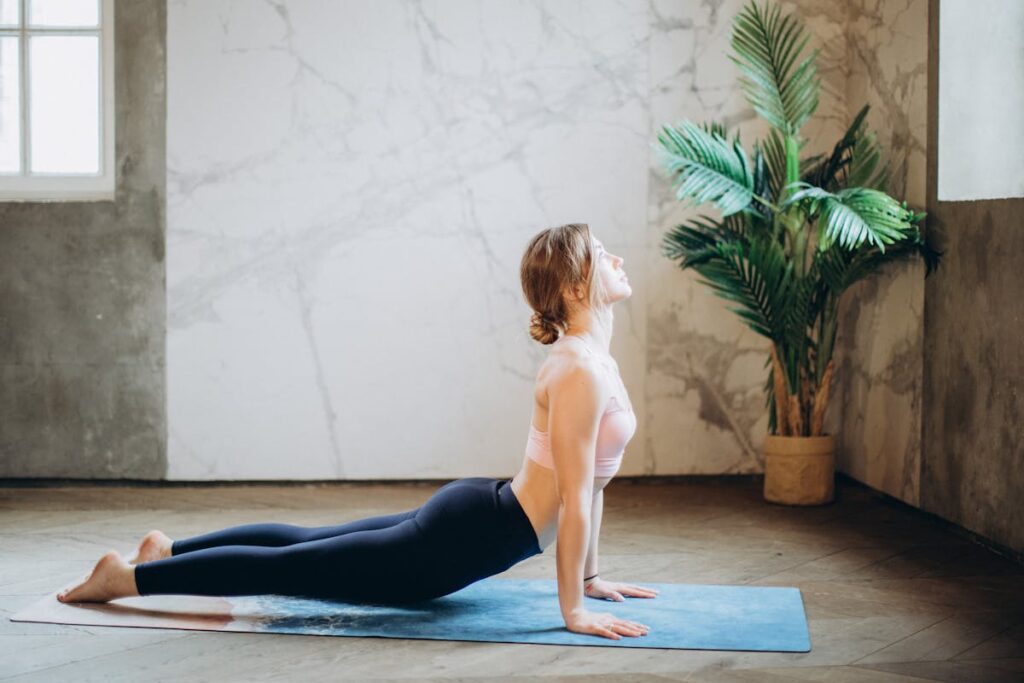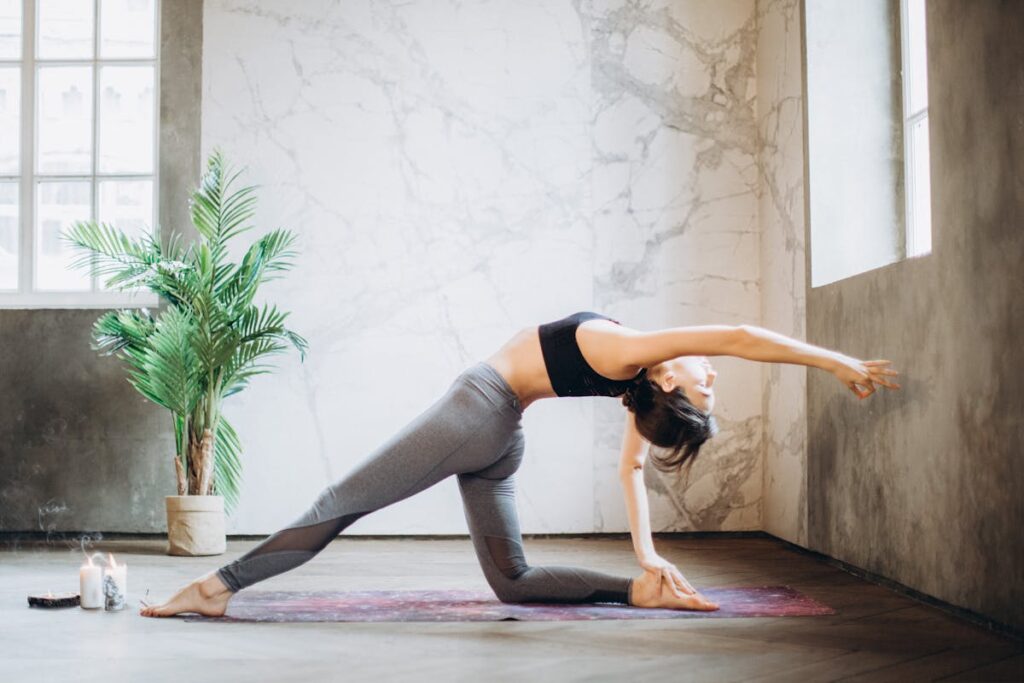Yoga is much more than a physical exercise; it’s a holistic practice that encompasses the body, mind, and spirit. Originating in ancient India, yoga has gained popularity worldwide for its profound effects on overall health and well-being. From increased flexibility to reduced stress levels, let’s explore the profound benefits of yoga for both the body and mind.
Physical Benefits of Yoga
1. Improved Flexibility: One of the most evident benefits of yoga is enhanced flexibility. Regular practice helps lengthen and stretch muscles, enhancing flexibility and lowering the risk of injury.
2. Strength and Muscle Tone: Yoga poses (asanas) often require engaging various muscle groups, leading to increased strength and muscle tone. Poses like plank, downward-facing dog, and warrior series build core strength and stability.
3. Better Posture: Yoga promotes proper alignment and posture by strengthening the muscles that support spinal alignment. This can alleviate back pain and prevent issues related to poor posture.
4. Increased Energy Levels: Yoga stimulates circulation and oxygen flow throughout the body, boosting energy levels and overall vitality.
5. Joint Health: Gentle movements and stretches in yoga help lubricate joints and improve mobility, benefiting those with arthritis or joint stiffness.

Mental and Emotional Benefits of Yoga
1. Stress Reduction: Yoga encourages mindfulness and relaxation, which can lower cortisol levels (the stress hormone) and promote a sense of calm and peace.
2. Improved Mental Clarity: Practicing yoga involves focused breathing and concentration, enhancing mental clarity and sharpening cognitive function.
3. Emotional Balance: Yoga teaches techniques for emotional regulation and self-awareness, fostering emotional resilience and stability.
4. Enhanced Sleep Quality: Regular yoga practice has been linked to better sleep patterns and can be an effective remedy for insomnia or sleep disorders.
5. Mind-Body Connection: Yoga emphasizes the connection between body and mind, encouraging practitioners to be present and mindful in the moment.
Types of Yoga and Their Benefits
1. Hatha Yoga: Focuses on physical postures and breathing exercises, suitable for beginners and those seeking a gentle practice.
2. Vinyasa Yoga: Involves flowing sequences of poses synchronized with breath, promoting cardiovascular health and strength.
3. Ashtanga Yoga: A dynamic and structured form of yoga that builds strength, flexibility, and stamina through a set sequence of poses.
4. Bikram (Hot) Yoga: Conducted in a heated room, this practice enhances detoxification and flexibility.
5. Restorative Yoga: Uses props to support the body in relaxing poses, ideal for stress relief and deep relaxation.

Tips for Starting Your Yoga Journey
If you’re new to yoga or looking to deepen your practice, here
are some helpful tips to get started and maximize the benefits of yoga:
1. Find a Qualified Instructor: Consider taking classes with an accredited yoga instructor who can lead you through proper alignment and technique. A knowledgeable teacher can provide personalized adjustments and modifications based on your abilities and goals.
2. Start Slowly: Begin with beginner-friendly yoga classes or gentle yoga styles like Hatha or Restorative Yoga. Focus on mastering foundational poses and gradually progress to more challenging sequences as you build strength and confidence.
3. Listen to Your Body: Honor your body’s limitations and avoid pushing yourself too hard. Yoga is about self-awareness and self-compassion, so practice with mindfulness and respect for your physical and mental well-being.
4. Practice Regularly: Consistency is key to reaping the benefits of yoga. Aim for a regular practice schedule that suits your lifestyle, whether it’s a few times a week or daily sessions. Even short sessions can make a difference in your overall well-being.
5. Explore Different Styles: Experiment with various styles of yoga to find what resonates with you. Some practitioners enjoy the dynamic flow of Vinyasa, while others prefer the gentle stretching of Yin Yoga. Each style offers unique benefits, so explore and discover what suits you best.
6. Create a Relaxing Space: Dedicate a quiet and peaceful area in your home for yoga practice. Use calming decor, such as candles, cushions, or
essential oils, creating a calming ambiance that enhances relaxation and focus.
7. Combine Yoga with Meditation: Pair your yoga practice with meditation for a holistic mind-body experience. Meditation helps quiet the mind, reduce stress, and deepen your yoga practice.
8. Stay Hydrated and Nourished:
Ensure you stay hydrated by drinking ample water before and after your yoga session. Eat a light meal or snack a few hours before yoga to fuel your body without feeling too full during practice.
9. Set Intentions: Begin each yoga session with a specific intention or focus. Whether it’s cultivating gratitude, finding inner peace, or building strength, setting intentions can deepen the meaning of your practice.
10. Practice Breathing Exercises: Incorporate pranayama (breathing exercises) into your yoga routine. Mindful breathing promotes relaxation of the nervous system, reduce stress, and enhance oxygen flow to your muscles.
Incorporating Yoga into Daily Life
To experience the full benefits of yoga, consider integrating it into your daily routine. Begin with a brief yoga session daily and gradually extend both the duration and intensity your practice. Attend yoga classes led by experienced instructors to deepen your understanding and refine your technique.
In conclusion, yoga offers a wealth of benefits for both the body and mind, making it a valuable practice for overall health and well-being. Whether you’re seeking physical fitness, stress relief, or mental clarity, yoga can be a transformative tool. Embrace the journey of exploring yoga and discover its profound effects on your body, mind, and spirit.
